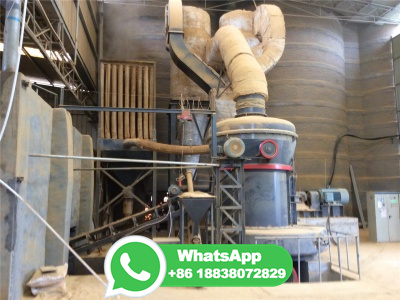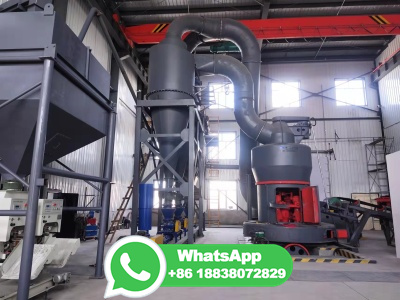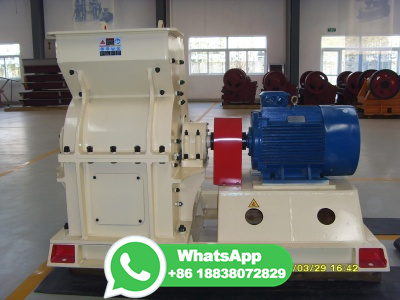
WEBDec 20, 2021 · We predict a production cost of 373 €/t for hot briquetted iron, and 351 €/t for a future scenario of 2025–2030. When the recently introduced EU rules for renewable fuels of nonbiological origin are applied, the production costs increased by 30–46 €/t. The rules also have a significant increasing effect on the required hydrogen storage.
WhatsApp: +86 18203695377
WEBMar 2, 2023 · Those two nations are particularly relevant for iron ore's future; China is the world's biggest steel maker, and India plans to double its steel industry by 2030, albeit with the help of a ...
WhatsApp: +86 18203695377
WEBApr 22, 2017 · Energiron direct reduction process (HYL process) uses a shaft reduction furnace to produce DRI. It is designed to convert iron pellet/lump ore into metallic iron by the use of reducing gases in a solidgas moving bed shaft furnace. O2 is removed from the iron ore by chemical reactions based on H2 and CO, for the production of highly .
WhatsApp: +86 18203695377
WEBNov 10, 2023 · This presentation reviews the different DR processes used to produce Direct Reduced Iron (DRI), providing an analysis on the quality requirements of ironbearing ores for use in these processes.
WhatsApp: +86 18203695377
WEBOct 28, 2022 · Assuming the complete reduction of two kinds of iron ore was achieved, the mole ratios of Fe 2 O 3 /H 2 and Fe 3 O 4 /H 2 are 1/3 and 1/4, respectively. Yet, the iron ore pellets are usually exposed to excessive pure H 2 in the actual process of HDRI. Thus, 4 calculation groups with various mole ratios of iron ore/H 2 are designed for the .
WhatsApp: +86 18203695377
WEBJun 30, 2010 · DRI is produced by passing hot reducing gases such as hydrogen, methane and carbon monoxide over iron ore (oxide), which is usually in the form of pellets or lumps. Although the process is conducted at high temperatures, these are still substantially below the melting point of iron. This means that the lumps and pellets retain their original ...
WhatsApp: +86 18203695377
WEBMay 20, 2021 · The pressure on the steel industry to reduce its carbon footprint has led to discussions to replace coke as the main reductant for iron ore and turn to natural gas, biosyngas or hydrogen. Such a major transition from the blast furnacebasic oxygen furnace route, to the direct reductionelectric arc furnace route, for steel production would .
WhatsApp: +86 18203695377
WEBJan 1, 2015 · Global productions of blast furnace iron (BFI) and direct reduced iron (DRI) between 1980 and 2012 (Anon 1, 2014; Anon 2, 2014). Quality requirements of iron ore for the BF ironmaking BF ironmaking process. The BF is a countercurrent reactor with solid burden, ferrous materials and coke charged from the .
WhatsApp: +86 18203695377
WEBMay 20, 2022 · HBI is the product of reducing iron ore with natural gas. This is called the direct reduction process and is an environmentallyfriendly production process; a DRI plant uses natural gas which is more environmentally sound than coke. The reduction process takes place in the reduction tower. A tower is the heart of the plant.
WhatsApp: +86 18203695377
WEBHYBRIT is conducting trials on the direct reduction of iron ore pellets using hydrogen in our pilot plant in Luleå, Sweden. The trials will run during, starting with fossilfree hydrogen in spring 2021. The plant has a direct reduction shaft, where the reduction takes place, and a number of electrolyzers for the production of hydrogen using fossilfree .
WhatsApp: +86 18203695377
WEBJan 1, 2022 · Global productions of crude steel, blast furnace iron (BFI), and direct reduced iron (DRI) between 1980 and 2019. ... For achieving the high metallization required by DRI, the DR pellets and lump ore must have a good reducibility. Increasing reducing temperatures can promote reduction kinetics and therefore increase the .
WhatsApp: +86 18203695377
WEBA. What are orebased metallics (OBMs)? Orebased metallics or OBMs include pig iron, hot metal, direct reduced iron and hot briquetted iron. These materials contain varying quantities of iron and are derived mainly from iron ore. The metallic iron content in these materials can vary from 85% to . OBMs have also been known by several ...
WhatsApp: +86 18203695377
WEBMay 12, 2023 · The state's magnetite iron ore reserves total 16 billion tonnes, of which 6 billion tonnes are identified as economically demonstrated resources. Magnetite is enabling a steel technology transition in South Australia. Liberty Steel announced on 4 March it would phase out its existing blast furnace at Whyalla Steelworks and build a new DRIEAF.
WhatsApp: +86 18203695377
WEBMay 5, 2015 · increased from a round 95 % to %, for pellets with 27 % porosity in a reduction gas consisting of H and CO (H/CO = ). Normally 90 95 % of the iron in DRI is in the metallic form. An ...
WhatsApp: +86 18203695377
WEBApr 1, 2021 · More than 80 % of the direct reduced iron is produced in vertical countercurrent shaft furnaces, which uses syngas from natural gas reforming as reducing agent. Two commercial technologies dominate the current market: Midrex process (65 %) and Energiron process (17 %) [26]. Pellets and lump ore are fed from the top of the .
WhatsApp: +86 18203695377
WEBThe new DRI which will be the first of its kind in Spain and EAF will be in production before the end of 2025. To maximize the emissions reduction potential, ultimately green hydrogen will be used to reduce the iron ore in the DRI, with the EAF powered by renewable electricity.
WhatsApp: +86 18203695377
WEBJun 3, 2020 · DRI production. In the DRI plant, iron ore in the form of DR pellets 8 Production of DR pellets is not entirely carbon neutral due to natural gas or oil residues used in baking. is reduced with hydrogen in order to form DRI. 9 Hydrogen with a purity of > percent needed as a reduction agent in the DRI.
WhatsApp: +86 18203695377
WEBApr 4, 2024 · A Direct Reduced Iron plant is a furnace that produces Direct Reduced Iron (DRI), also referred to as sponge iron due to its porous nature. The process can also produce Hot Briquetted Iron (HBI). The iron can then be used to produce steel via other production routes, such as the Electric Arc Furnace (EAF). The process uses iron ore .
WhatsApp: +86 18203695377
WEBDec 19, 2022 · When recycling scrap is not sufficient, most companies plan to close their greenmetallics supply gap using DRI and an electric melter. There are two types of furnaces: the electric arc furnace (EAF) produces steel directly and is currently mainly used to produce long steel; the open slag bath furnace (OSBF) 4 Also referred to as a .
WhatsApp: +86 18203695377
WEBNov 3, 2021 · A DRI plant uses natural gas to reduce iron ore, resulting in a significant reduction in CO 2 emissions compared with coalbased blast furnace iron making. In Hamburg, Germany, ArcelorMittal is trialing replacing natural gas with hydrogen to make DRI, with its industrial scale pilot project anticipated to be commissioned before the end .
WhatsApp: +86 18203695377
WEBAbout the Conference. SteelMint Events CoalMint is thrilled to announce the highly anticipated 3day mega event – The 6th Indian Iron Ore Pellet Summit, 3rd India Coal Outlook Conference 5th Indian DRI Steel Conference. The event is scheduled to take place from August 24th to 26th, 2023 in the vibrant city of Kolkata, West Bengal, India.
WhatsApp: +86 18203695377
WEBMay 26, 2021 · Iron ore is reduced with hydrogen while in a solid state, hence the name direct reduction, to produce direct reduced iron (DRI) called sponge iron. Sponge iron is then fed into an EAF, where electrodes generate a current to melt the sponge iron to produce steel. Some carbon is needed so that steel can be produced.
WhatsApp: +86 18203695377